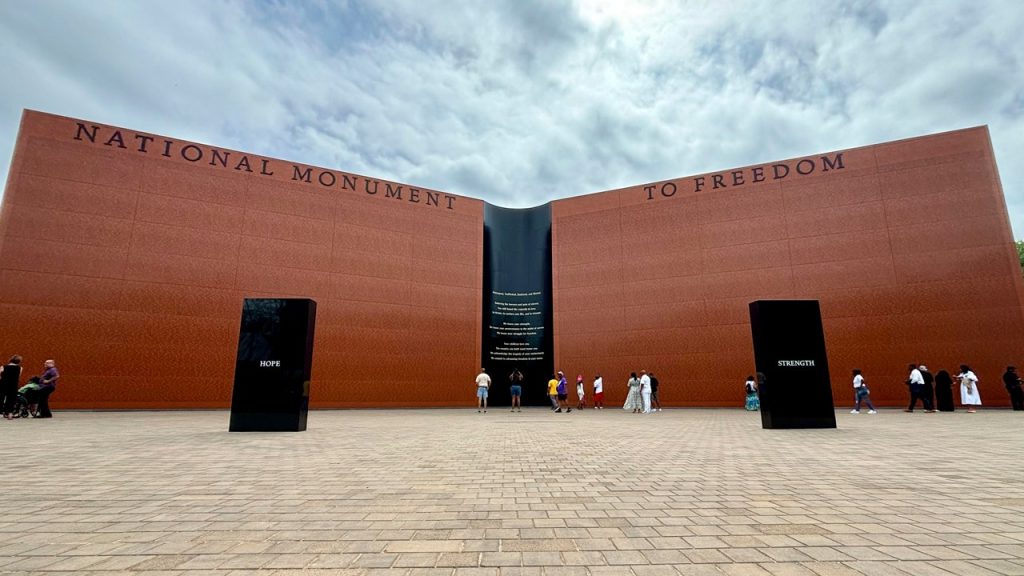The Equal Justice Initiative dedicated its National Monument to Freedom on June 19, 2024, in Montgomery, Alabama. The monument, standing four stories tall, is inscribed with 122,000 surnames chosen by formerly enslaved people after the end of the Civil War. These names represent the more than 4 million enslaved individuals who were emancipated. The dedication ceremony invoked Juneteenth, a holiday that celebrates the end of slavery, specifically honoring June 19, 1865, when enslaved people in Galveston, Texas, discovered they were free two months after the Civil War.
During the dedication ceremony, Bryan Stevenson, founder of the Equal Justice Initiative, highlighted the resilience and perseverance of enslaved people. He emphasized that while they faced unspeakable horrors, they never lost hope and continued to yearn for freedom. Stevenson stated that Juneteenth is a day to confront the brutality of slavery while also celebrating the dignity and strength of those who endured it. The monument serves as the centerpiece of the new Freedom Monument Sculpture Park in Montgomery, where art and historical artifacts tell the story of enslaved individuals in the United States.
Juneteenth commemorates the day enslaved individuals in Galveston, Texas, learned of their freedom on June 19, 1865, two months after the Civil War. The National Monument to Freedom, with its 122,000 inscribed surnames, honors those who were emancipated after the Civil War. The Equal Justice Initiative established the park to commemorate the legacy of enslaved individuals with honesty, making it the third site created by the organization following the National Memorial for Peace and Justice and The Legacy Museum.
As part of the dedication ceremony, Dr. Michele R. Williams and her mother, Barbara Y. Williams, searched for their family surname, Murdough, among the thousands of names inscribed on the monument. Dr. Williams shared that their ancestor, a man named Moses, is believed to have lived in one of the slave cabins now showcased in the park. Witnessing the cabin was described as heart-wrenching yet incredibly moving by Dr. Williams, highlighting the deep connection to the history of enslaved individuals represented by the monument and the surrounding sculpture park in Montgomery.
The National Monument to Freedom and the Freedom Monument Sculpture Park aim to provide a space where the stories of enslaved individuals can be shared authentically and respectfully. By honoring their legacy and showcasing the resilience and strength of those who endured slavery, the park hopes to educate visitors and celebrate the enduring spirit of those who persevered through adversity. Through its dedication to historical accuracy and storytelling, the Equality Justice Initiative invites visitors to engage with the painful history of slavery while also acknowledging the triumphs and resilience of those who survived and thrived.
The dedication of the National Monument to Freedom on Juneteenth underscores the importance of remembering and honoring the legacy of enslaved individuals in American history. By highlighting the stories of those who endured slavery, the Equal Justice Initiative hopes to confront the legacy of racial injustice in the United States while also celebrating the strength and resilience of those who fought for freedom. The monument and sculpture park serve as poignant reminders of the struggles faced by enslaved individuals and their enduring spirit, inviting visitors to reflect on the past and consider how it informs the present and future of the nation.


